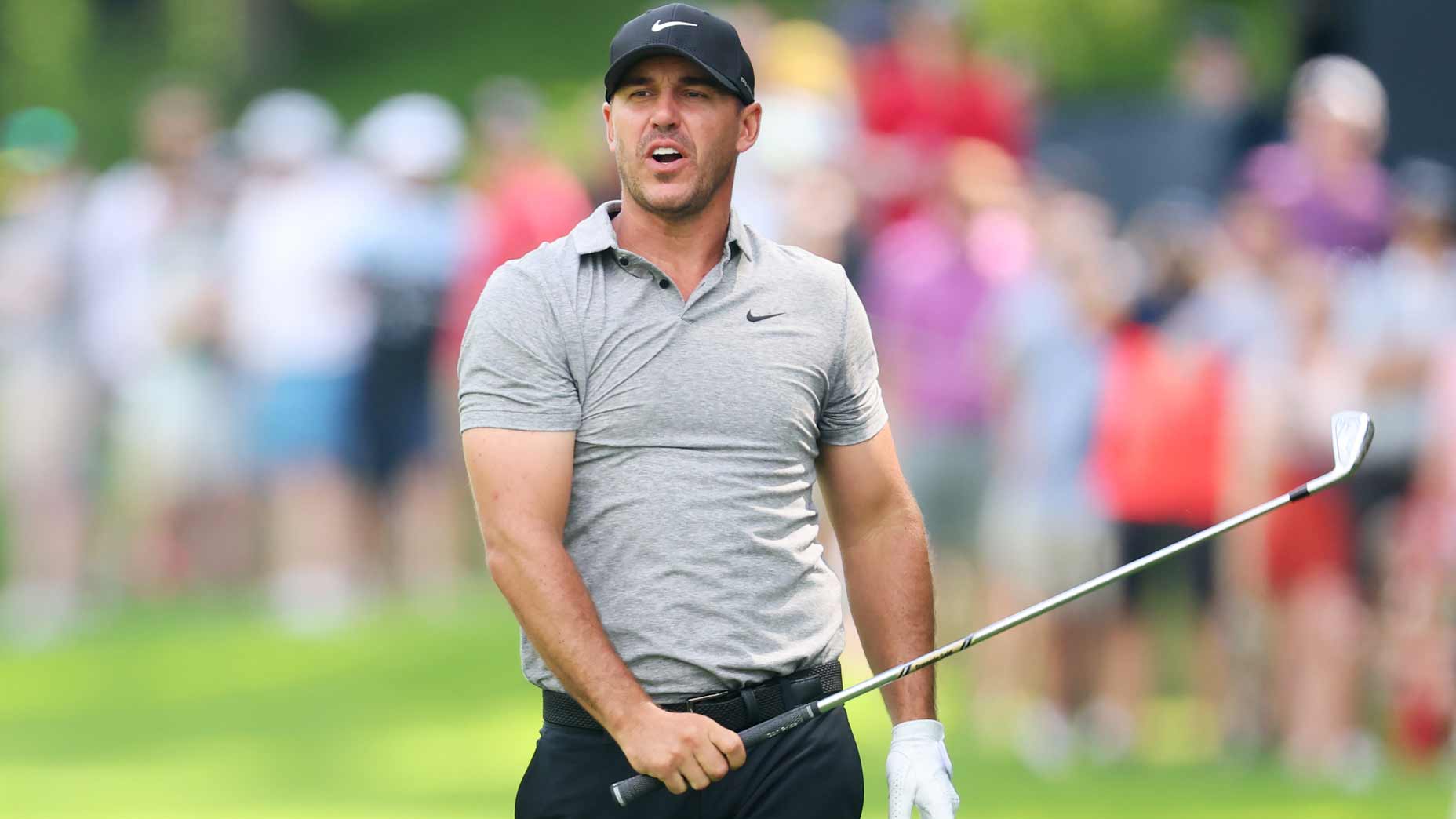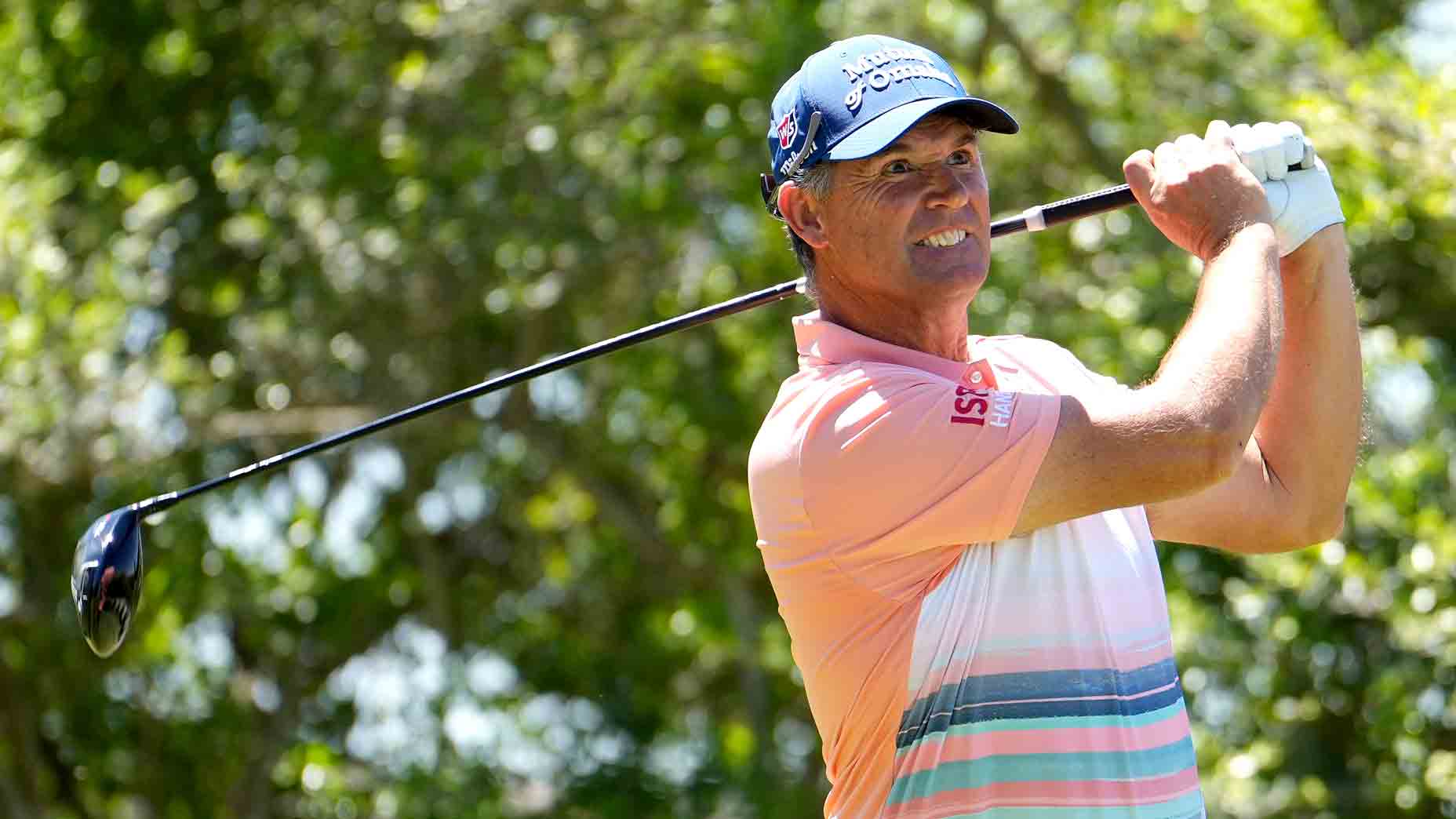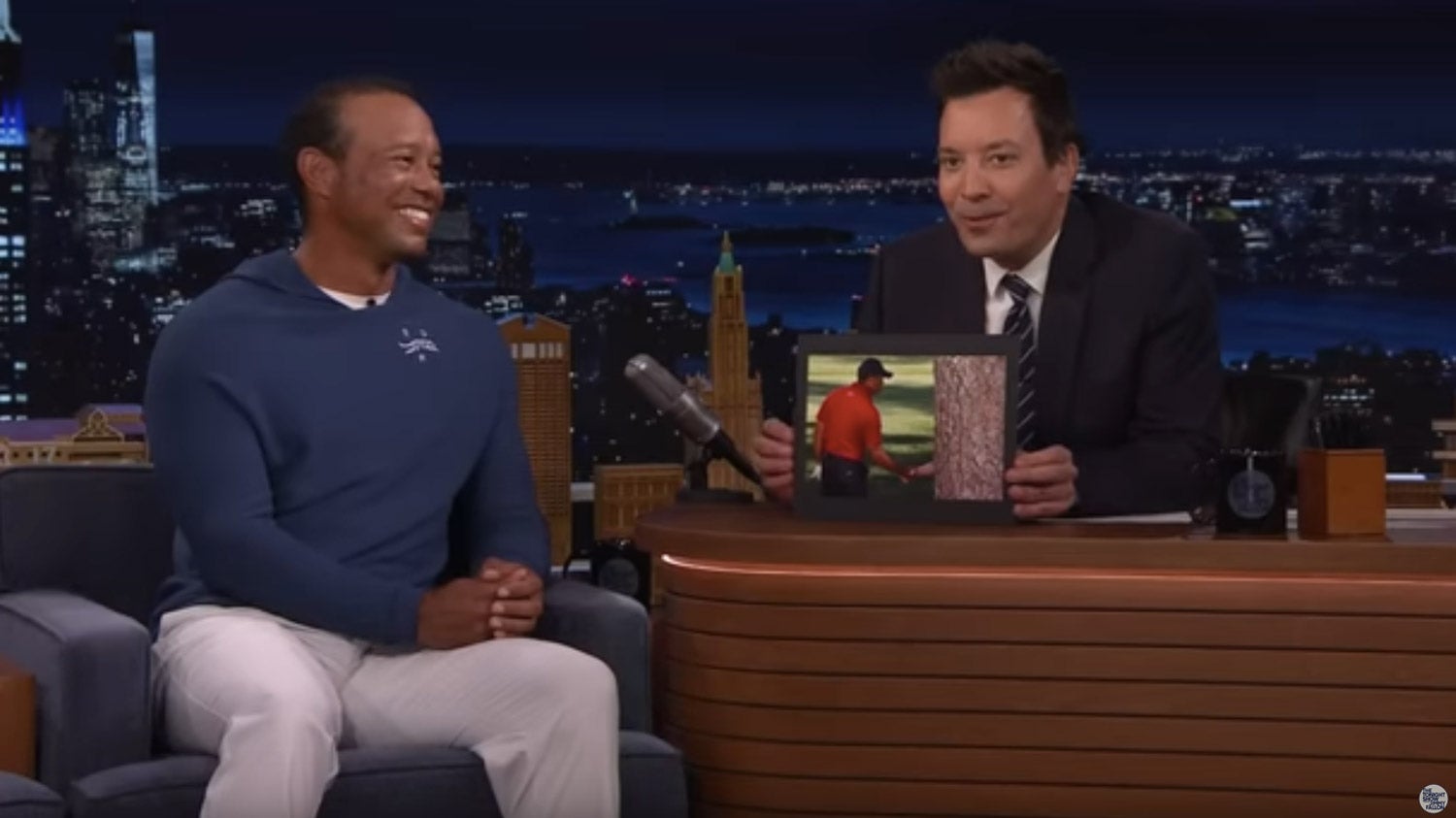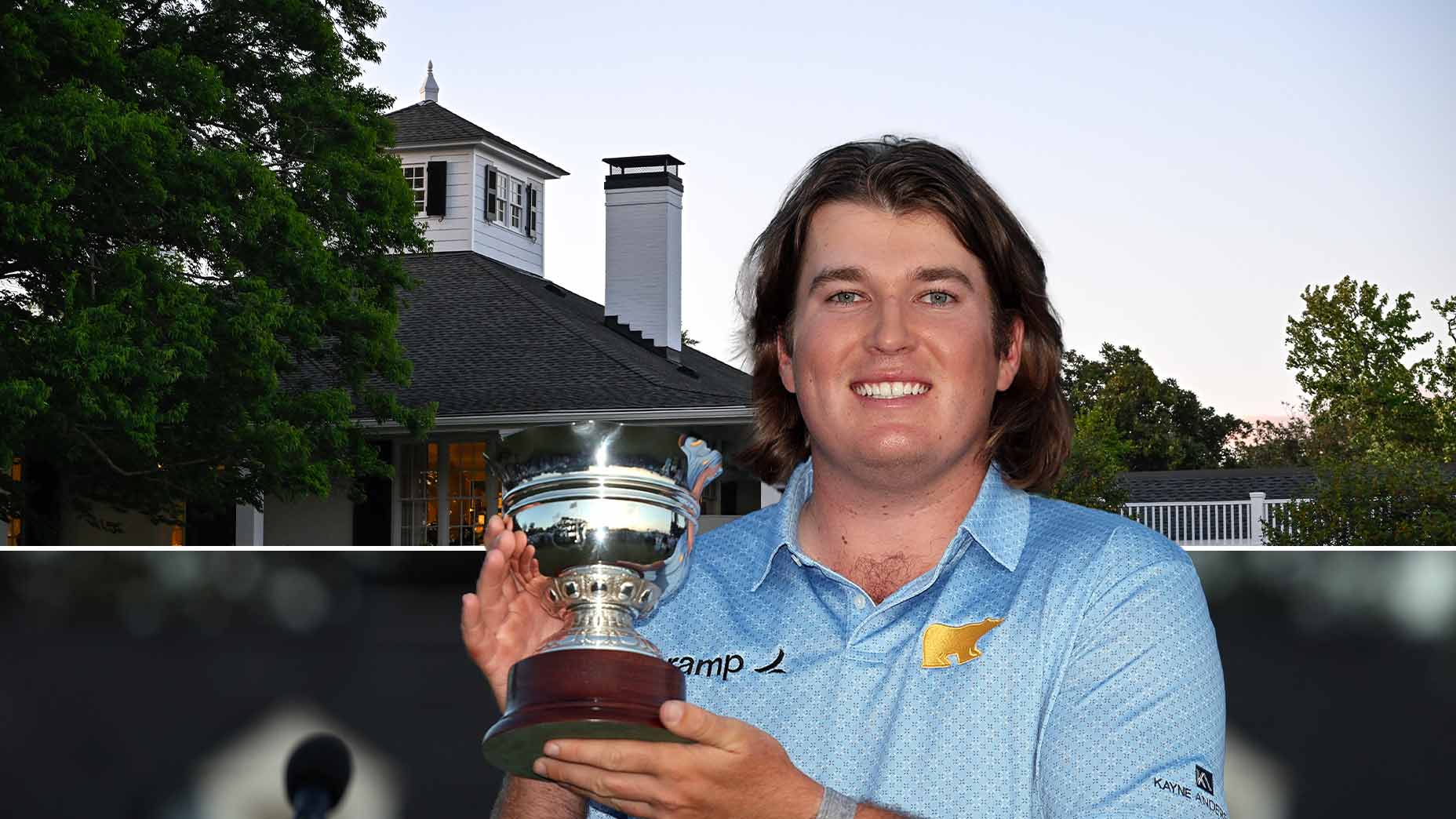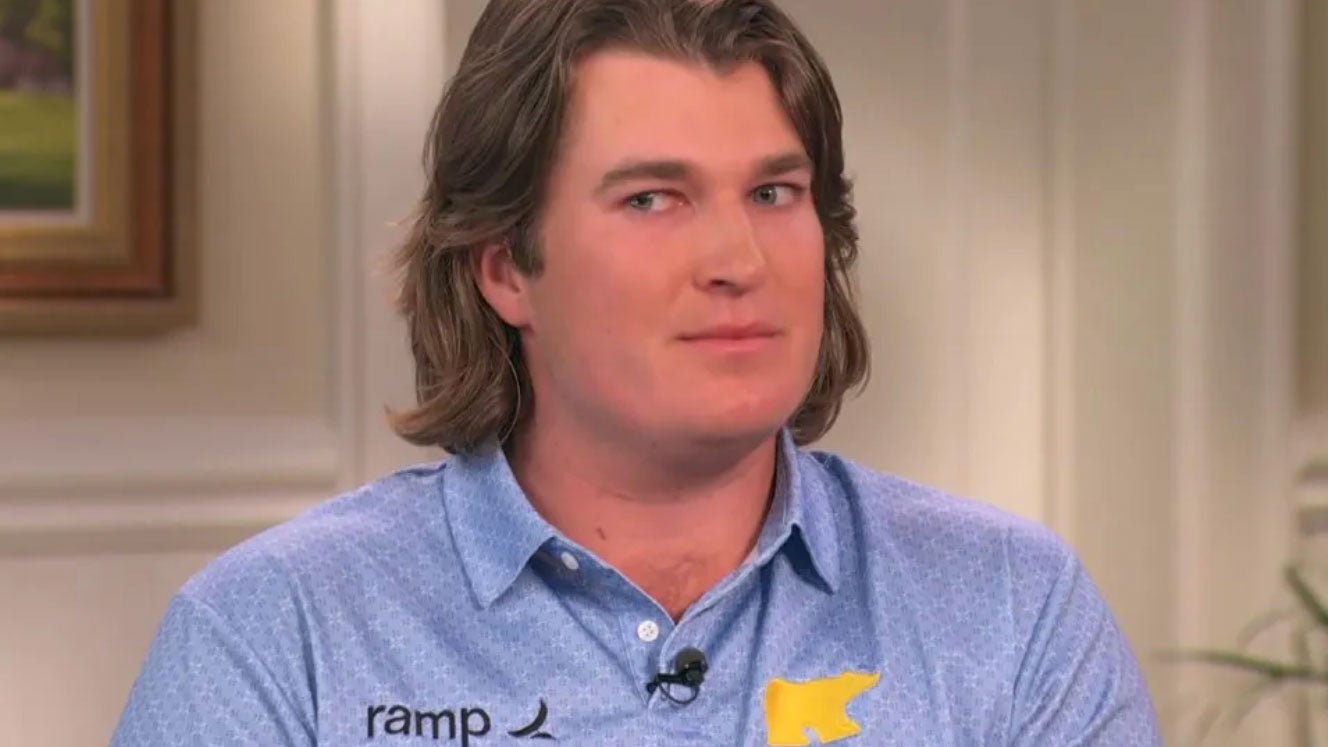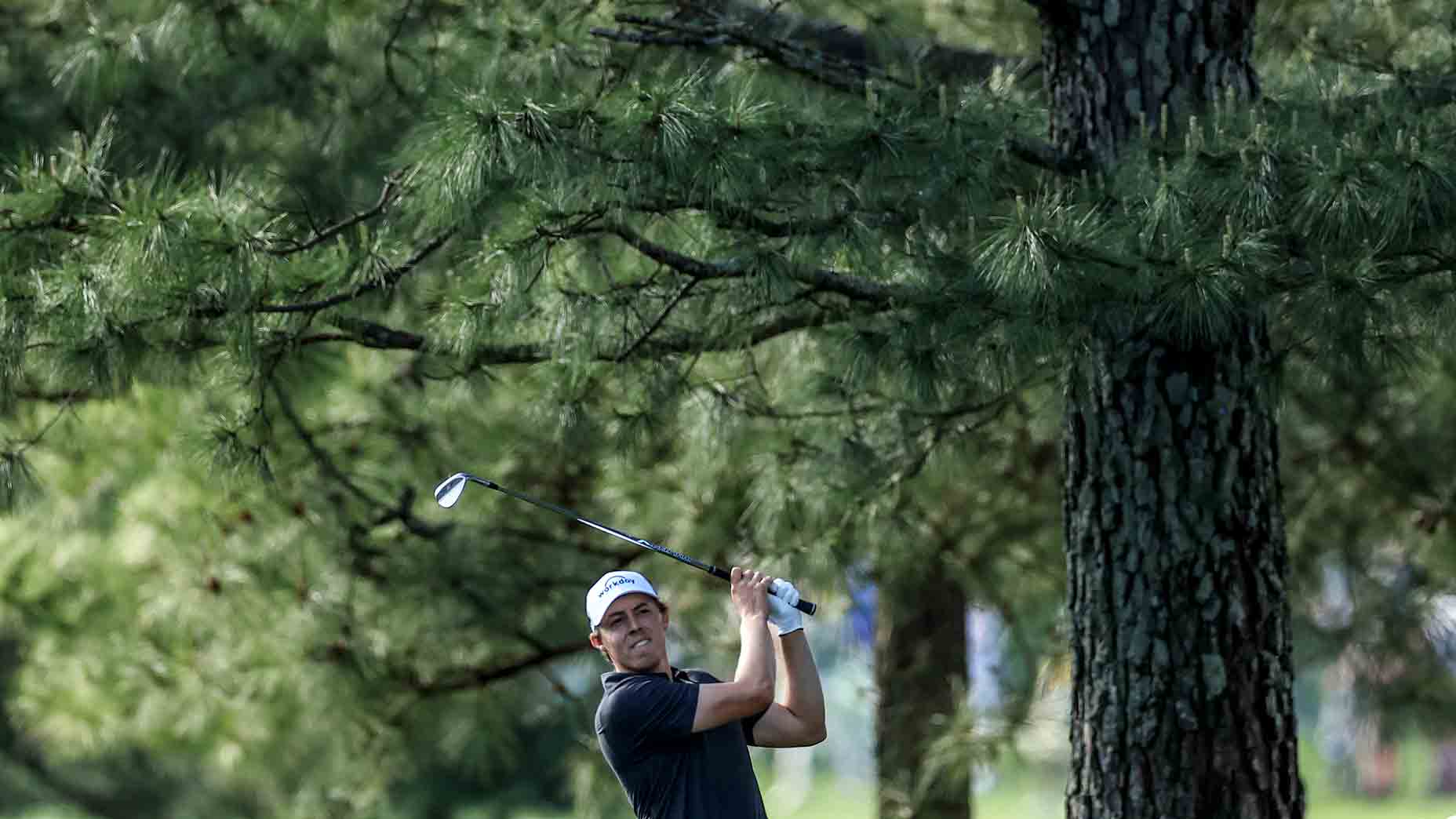Controversial Koepka, Morikawa videos show how sports are changing
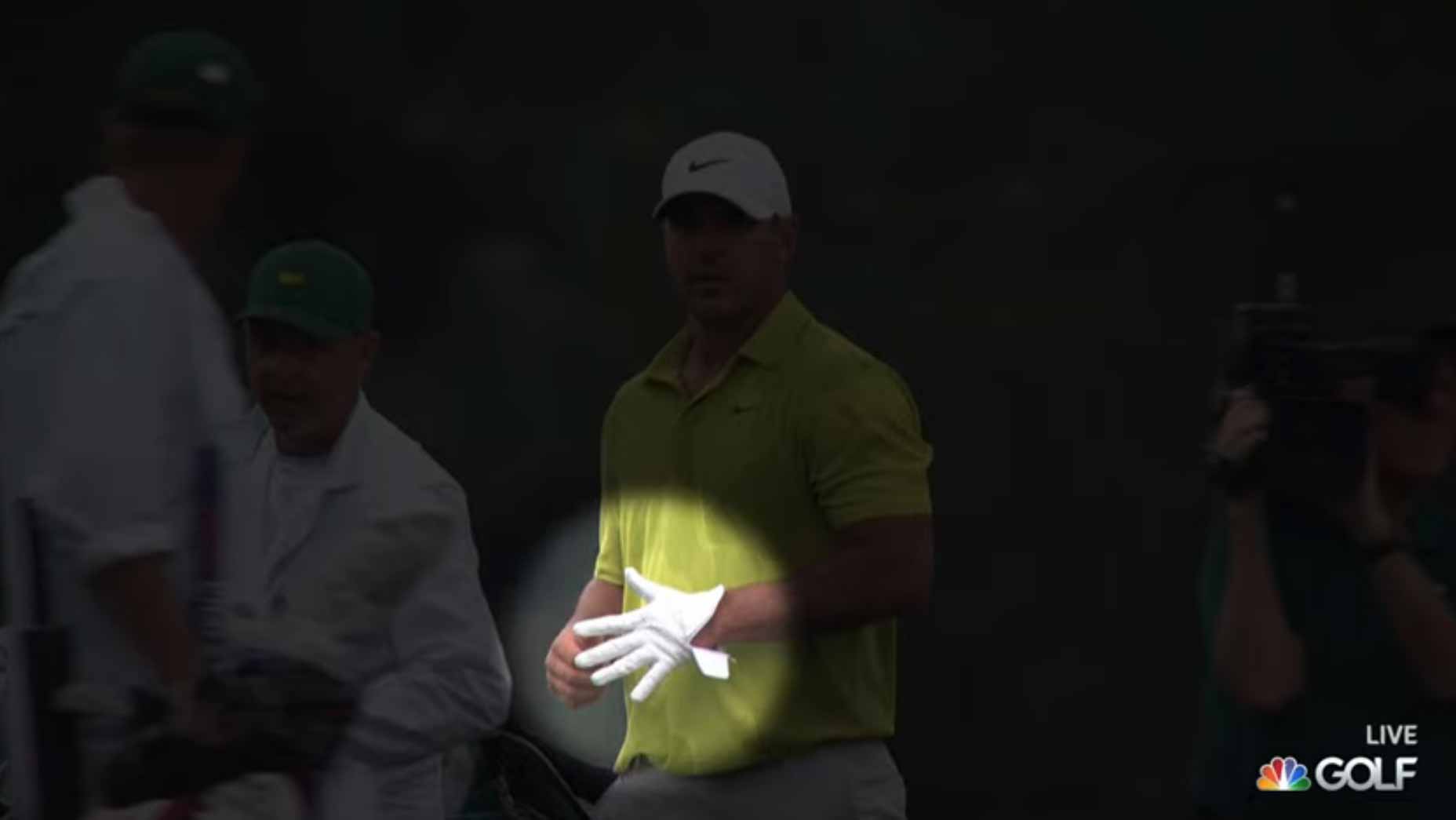
Brooks Koepka got Zapruder-like treatment from Golf Channel after a potential rules violation.
Golf Channel
AUGUSTA, Ga. — Collin Morikawa stepped to the microphone after the first round of the Masters and faced a question he didn’t expect.
“What happened on 6 green today?”
Morikawa wasn’t sure what the reporter was talking about. “On 6?”
“Did the ball move back on you?”
Morikawa was dismissive.
“Yeah, the ball moved, and then I moved it back. Pretty standard now. Pretty routine in our rules book, thankfully.”
Thing is, Morikawa hadn’t spent his last few hours on the internet. He’d been busy battling his way to a first-round 69 at Augusta National, where cell phones aren’t allowed, so even if he hadn’t been playing he still wouldn’t have seen the clip of him attempting to place his ball on the 6th green, which had quickly made the rounds. In the video — which had racked up millions of views across Twitter and Instagram — he placed his ball several inches in front of his marker before moving the marker closer to the ball. It wasn’t clear what the potential violation was. But the general consensus was that things looked a little weird.
Later in the interview, after questions about Morikawa’s mindset (freer) and hitting a root on No. 9 (“that was scary”) and missing the green at No. 13 (“just a bad swing”) someone else brought up No. 6, again. And now Morikawa started to understand.
“Is that a big talk?”
Well, yeah. Kinda.
Now Morikawa was split between two emotions. On the one hand, he felt defiant and confident he hadn’t done anything wrong.
“Good. Bring that PIP up,” he said, hearing more about the viral video. “Blow me up, guys.”
But he was also understandably concerned. This is the Masters, after all. Nobody wants controversy. He asked for clarification from the assembled reporters.
“So what happened? Just so I know…”
After the explanation matched his understanding of the situation, Morikawa seemed more at ease.
“You guys were freaking me out here,” he said. “Okay, good. PIP’s going up.”
IN THE PRESS ROOM, tied for the lead, Brooks Koepka seemed more prepared for a question of his own.
“Yeah, we looked at it when we got back in,” he said.
The powers that be at Augusta National had been alerted to a potential rules violation when Koepka’s caddie Ricky Elliott appeared to mouth “five” to Brennan Little, caddie to playing partner Gary Woodland. Koepka appeared to hold out five fingers, too. While it’s certainly possible they’d been discussing the number of Great Lakes (1. Huron 2. Ontario 3. Michigan 4. Erie 5. Superior), it seemed far more likely they were indicating the 5-iron Koepka had just hit into the green. That would mean a violation for giving advice and a two-stroke penalty for each player, for asking and for giving.
Still, Koepka denied any wrongdoing. And rules officials backed him in an official statement.
“GW and Butchie [Woodland and his caddie] had no idea what we were hitting; they didn’t even know because — I know that fact because GW asked me what we hit walking off, when we were walking down,” Koepka said. “So that’s all I can give you.”
Leaving Koepka’s guilt or innocence momentarily aside (plenty of others are waging that war) I was particularly interested in what the incidents meant, lumped together, about how we view sports in the modern era.
“Common practice”
The nature of the offense puts it in an intriguing gray area. Golf Channel commentator Paul McGinley called it a “very obvious” breach and added that it was “staggering” that they denied it. But he also followed with this:
“This is common practice on Tour. Whether you like it or not, it’s common practice. It happens in every professional tournament around the world. It’s not obvious always, so blatant … this is not considered a serious breach among players.”
It’s not considered a serious breach, McGinley said, because the information is so readily available. Caddies constantly flash the club they’re hitting to walking announcers or video producers for TV purposes. And players will often peek in each others’ bags on par-3s to get a sense what their partners are hitting. But, per the rules, it crosses a line to advice when one player or caddie tells another player or caddie. Accounts vary on exactly how widespread the practice is.
Surveillance and spread
As TV coverage and technology have changed, refereeing has changed with it. We put college basketball games on hold to see which fingertip the ball touched last. Shortstops used to be able to skim their feet anywhere near the base while turning two; no longer. And catchers framing pitches feels like an increasingly antiquated tradition as umpires get closer to robots. Accepted quirks of rule-bending are growing rarer by the day.
That’s nowhere truer than in the golf world. Think of Jon Rahm at the Memorial in 2020; he was assessed a post-round penalty after HD slow-mo replay determined his ball had moved when he’d set his wedge behind it. Surely there have been thousands of balls that have moved thousands of millimeters over the decades, with no cameras there to capture them?
This year also marks the 10th anniversary of Tiger Woods’ illegal drop at No. 15, a breach of the rules phoned in by a viewer from home. Another TV viewer spotted a Lexi Thompson penalty that likely cost her a major. This stuff has been thorny for a long time.
But even though the TV view call-in has been abandoned, we have more access to everything than ever before. For years, the Masters only broadcast the final four holes. For decades after that they refused to show all 18. There was value in scarcity, the theory went. Now? You can go to Masters.com and see every shot. Every single shot! From every player!
Social media can amplify controversial moments and ensure they spread in real time. Morikawa’s explanation made perfect sense; it’s also unlikely as many people saw the explanation as saw the initial clip. Twitter makes a better executioner than judge.
Patrick Reed knows the entire process intimately. The slow-mo breakdown of a questionable rules-related incident. The viral social media spread. The Zapruder-like breakdown. The resulting reputational harm. And one incident inspires closer inspection upon the next.
There are plenty of benefits to this increased exposure, of course. Koepka has gained countless fans from his podcast appearances, from his social media, from his Netflix vulnerability. We crave what’s real and what’s entertaining, and those hot-mic moments offer a window in. But day-in, day-out, constant exposure means players have to be more vigilant.
Morikawa entered Friday with his reputation intact and his Player Impact Score slightly boosted. As for Koepka?
At last check he’d opened up a four-stroke lead on the field.


